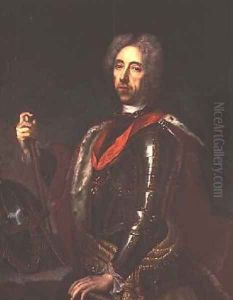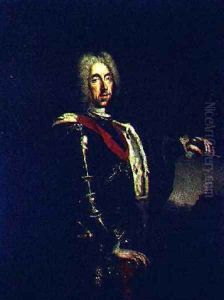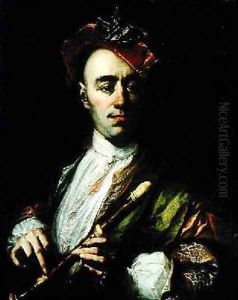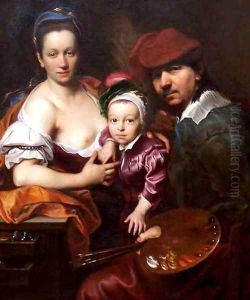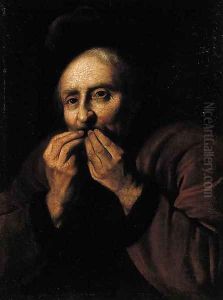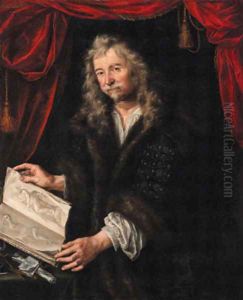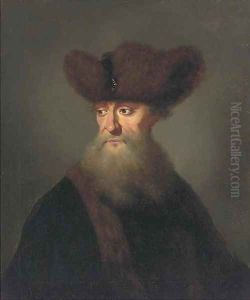Johann Kupezky or Kupetzky Paintings
Johann Kupezky, also known as Jan Kupecký or Johann Kupetzky, was a prominent Bohemian portrait painter who spent a significant part of his career in Vienna and later in Rome. Born on May 5, 1667, in Pezinok (now Slovakia), which was then part of the Kingdom of Hungary, Kupezky showed an early talent for art. His family was of Hungarian-German ethnicity, and despite their modest means, they supported his artistic pursuits.
Kupezky began his formal training in the studio of the painter Peter Brandl in Prague. His talent was evident, and he received a scholarship to study in Italy, which was then the epicenter of the European art world. In Italy, Kupezky was particularly influenced by the work of the Bolognese painter Carlo Maratta. He also had the opportunity to study the works of other masters such as Raphael and Annibale Carracci.
After his studies, Kupezky moved to Vienna, where he quickly established himself as a sought-after portraitist among the Austrian and Hungarian nobility. His style was characterized by a robust realism combined with a sophisticated understanding of his subjects' personalities, which he captured through expressive faces and elegant postures. Kupezky's portraits were known for their rich textures, attention to detail, and the lifelike rendering of fabrics and jewels.
In 1709, he married the widow Susanna Maria von Sandrart, who was related to the well-known German painter Joachim von Sandrart. This connection helped further his career and expanded his network within the art community.
Kupezky eventually settled in Rome in 1724, where he continued to work on commissions for high-ranking patrons, including Popes and members of the European aristocracy. His work was in demand, and he gained a reputation as one of the leading portrait painters of his time.
Despite his success, Kupezky maintained a down-to-earth lifestyle and was known for his generous support of young artists. He was also an avid art collector and connoisseur. His collection included not only his own works but also pieces by other renowned artists of the time.
Johann Kupezky died on July 16, 1740, in Rome. His legacy is preserved in the many portraits that remain, which are held in museums and private collections around the world. They continue to be studied and admired for their mastery of form, color, and depiction of the human character.
